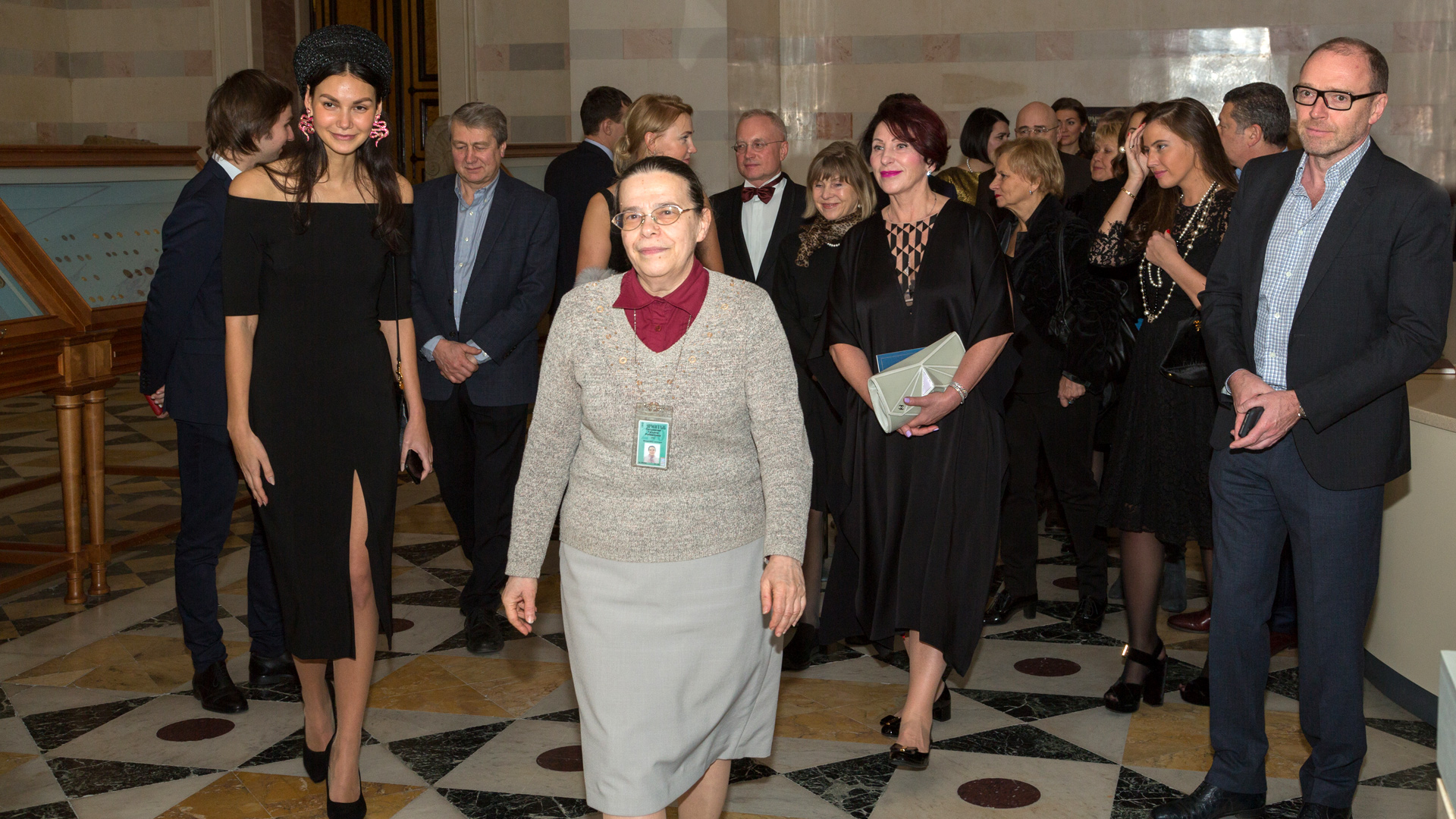Presentation of an Indian rose water sprinkler after restoration
On 14 November 2017, a 17th-century Indian rose water sprinkler was presented in the State Hermitage following a restoration carried out with the support of the House of Cartier.
“Today we are ceremonially returning to the display a unique vessel for rose water,” Mikhail Piotrovsky said, greeting the guests. “It is a wonderful piece with several layers to its history. We are very grateful to the House of Cartier for its help in the restoration. This is an attractive combination of the jewellery of Cartier and the treasures of the Mughals.”
Arkady Igoryevich Izvekov, General Director of the House of Cartier Saint Petersburg, expressed gratitude to the Hermitage for the opportunity to participate in such a unique project.
Anatoly Alexeyevich Ivanov, leading researcher in the Department of the East, spoke about the exhibit, which was among the gifts brought by the embassy from Nadir Shah and about the attribution of the vessel that was previously considered Iranian.
The gold rose water sprinkler embellished with large emeralds and rubies is a luxury item from the treasury of the Mughal Emperors. The vessel was brought to St Petersburg in 1741, among the gifts from Nadir Shah, the ruler of Iran in 1736–47, to the court of Empress Anna Ioannovna. The embassy was sent off in October 1739, from Delhi, after Nadir Shah had captured that city and plundered the treasury of the Mughal Emperors. The precious gifts arrived in Russia two years later. In the second half of the 18th century, they were part of the main collection of Catherine II’s Hermitage.
Vessels for scented water of this kind were originally used in India during the performance of religious rituals. At the court of the Mughal dynasty, who ruled India from 1526 until the mid-19th century, they turned from ritual utensils into domestic objects. The rose water sprinkler consists of two separate parts: the round body and long tapering neck. Inside there is a silver bulb that would hold the liquid. The entire surface of the vessel is covered with precious stones. Narrow vertical bands of rubies divide the body of the sprinkler into eight sections that are decorated with floral ornament made of emeralds finished in the form of high cabochons. The largest of the stones are covered with carving. The place where the neck and body connect is also marked by a horizontal belt of engraved emeralds. The scale-like pattern on the neck is formed by alternating small-sized rubies and emeralds. The decoration displays the red and green colour scheme typical for the works of Mughal jewellers. The exquisite vessel ends in an eight-lobed rim, into the centre of which is a screw stopper decorated with a large pearl. It closes the small round opening through which the rose water was released.

The rose water sprinkler was restored in the State Hermitage’s Laboratory for the Scientific Restoration of Precious Metals. Before the restoration work was carried out, studies were made of the metal, stones and mastic. The internal structure of the vessel was examined with the aid of a high-resolution video endoscope. An electron microscope was used to investigate the morphology of the metal and to map the distribution of its elemental composition. An in-depth study was made of the Indian Kundan jewellery technique and a precise drawing was made of all the elements and details of the construction. Igor Karlovich Malkiel, the head of the restoration laboratory, said that modern technologies made it possible to study the methods used by Mughal jewellers. In the course of restoration, mechanical and laser cleaning of the gold construction was carried out, the dried-out mastic used to attach the precious stones and pearl was refreshed and then the stones were fastened in their sockets.










